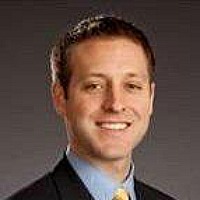The writing was on the wall. In April 2007,
New Century Financial Corporation, one of the largest subprime mortgage originators, filed for bankruptcy. In July 2007, Bear Stearns liquidated two now-infamous hedge funds that invested in mortgage-backed securities. In August 2007, Fitch Ratings downgraded Countrywide Financial to BBB+, its third-lowest investment-grade ranking. In September 2007, the U.K.’s Chancellor of the Exchequer authorized the Bank of England to bail out Northern Rock, Great Britain’s fifth-largest mortgage lender.
For Dean Curnutt, then running sales in Bank of America Securities’ equity derivatives unit, the signs of a pending financial meltdown were all too apparent. The problem, as he saw it, was that the risk wasn’t reflected in the equities markets. Mortgage default rates were increasing.
Mortgage originators were collapsing. Mortgage-backed securities were getting the cold shoulder. But the CBOE Volatility Index ( VIX) stood at an all-time low of 10. Long before Lehman Brothers imploded in September 2008, Curnutt, now chief executive of agency brokerage Macro Risk Advisors, was expecting trouble. (See Scary World Sidebar below)
“I’m a believer in efficient markets,” the exec said, “but there are definitely instances when one market is telling you something that another market is not reflecting.”
Believing that investors were clueless about the pending financial disaster, Curnutt left Banc of America Securities in January 2008 to spread the word. His plan was to build an options brokerage that would offer money managers insights into the big-picture risks out there and advice on how to use options to deal with them.
“The investment community doesn’t understand risk as well as they need to in a world that is so quickly changing,” Curnutt said.

So there would be no doubts about his mission, Curnutt christened his firm “Macro Risk Advisors.” The agency brokerage has focused on the problems in the U.S. and Europe—particularly, the interplay between government and the financial markets—and on advising customers on how to navigate the uncertainty.
“We formed the firm to give clients really good independent advice at a time when the VIX went from 10 to 80,” Curnutt told Traders Magazine. Curnutt is the largest shareholder in the company, owning at least 75 percent, according to a filing with the Financial Industry Regulatory Authority.
MRA was part of a mini-wave of new options shops formed in the wake of the financial crisis, according to Justin Golden, a partner at hedge fund Lake Hill Capital Management and a former trader at MRA. Due to problems at the large firms at the time, many equity derivatives staffers left and established their own firms. Compensation was an issue as was a cutback in capital commitment.
“Part of the frustration at the time, whether they were prop traders or customer facilitation traders, was that they didn’t have the same risk-taking capabilities,” Golden explained. “So some of these people went out on their own.” (One of them was Harsh Padia, now a successful upstairs market maker. Padia founded HAP Capital in 2009.) Curnutt spent seven years in the equity derivatives department at Banc of America Securities, a highly successful group built by Jon Sandelman, who later became president of the company.
In 2008 and 2009, Curnutt lured away a handful of traders from the department to start MRA. (Many more departed for Nomura Securities.) In 2009, MRA received approval to do business from the Securities and Exchange Commission and FINRA and did its first trade. Operating out of a small office near New York’s Times Square, MRA now employs about a dozen traders and analysts. It is looking to add another half dozen and is “aggressively meeting candidates,” Curnutt said.
To lend heft to the trading operation, Curnutt recently hired away the head of listed equity derivatives trading at Nomura. Brian Bier spent three years at Nomura, having joined the brokerage as part of the exodus from Banc of America Securities in 2009. He is now head of equity derivatives sales and trading at MRA. Bier spent six years at Banc of America Securities as a trader, running energy, retail and technology volatility books.
Prior to that, he spent three years at Lehman Brothers on the structured side of the business. According to Bier, he was once involved in one of the largest trades in options history, involving 350,000 contracts.
MRA’s clients are mostly hedge funds; many are “volatility arbitrage” shops. That means they trade volatility, looking to take advantage of differences between the implied volatility of the market and their own volatility pricing calculations. Others are traditional long/short hedge funds with stock positions to manage. Still others may be outside the world of equities altogether.
Because risk is highly correlated across asset classes these days, Curnutt explained, credit investors have learned that credit spreads and the VIX are also correlated. With that in mind, the funds may use index options to hedge their high-yield bond bets, for example. The exec is also seeing so-called macro fund managers turn to options to put on big bets.
Typically, these funds use fixed income securities, currencies and commodities for their trading. Trades at MRA range from 250 contracts to 50,000 and are handled strictly in the upstairs market.
That means working with layoff desks and other market-maker types over the telephone and instant messaging. Only after a trade is consummated is it taken to an exchange for a print. MRA is not a member of any exchange, so it works through a member to put the print up. The firm competes against other agency brokers as well as the large banks.
Unlike the bulge shops, it does not commit capital for trades. While that may have been a drawback in the past, it is less so these days, according to Bier. That’s because the big banks are less willing to risk capital that has grown more valuable under new regulations (see Not Neccesary Sidebar below).
Bier, with his 12 years of equity derivatives trading experience, was clearly brought in to burnish MRA’s reputation as a trading house. But unlike other institutional brokerages that live or die by their order handling, MRA wants to be recognized for its advice as much as its trading prowess.
That’s not easy.
All of the major equity derivatives players supply their customers with research, or market strategy advice. So do many of the small institutional brokers, such as MKM Partners, BTIG and Topeka Capital Markets.
“If you play in the big leagues, you have to have it,” said Andy Nybo, a principal with Tabb Group, and head of its derivatives practice. “The buyside is not going to route an order to a broker based on a piece of research, but they wouldn’t be talking to that broker if they didn’t already have good trading ideas.”
According to a Tabb survey, hedge funds ranked research third behind capital commitment and commissions as a factor in their order-routing decisions. Of that research, actionable trading ideas were cited by nearly half the respondents as the most valuable. Only 9 percent cited macro research as leading to an order. (Technically, according to FINRA, the options product is not considered “research,” but market strategy or trading advice.)

Still, MRA managed to make Tabb’s list of the top providers of derivatives research, one of only two agency brokers to do so. Like most options brokers, MRA’s advice is geared toward putting its clients into profitable or loss-preventing trades. To that end, the firm develops a view on the risks down the road and whether or not they are being reflected in the current price of volatility.
Right now, volatility is cheap, MRA execs say, and traders should buy. That’s because MRA sees trouble down the road.
“We have some very serious discussions going on within the ECB and yet we still have big moves in the S&P index,” Bier explained. “You have this scenario where what is actually happening versus the fear isn’t exactly the same, so you get cheap options. They’re cheap for a reason, but we think you should be buying.”
Sidebar One: Scary World
With two calamitous financial episodes in just four years in the U.S. and Europe, the need for macro risk advice seems obvious. Long-term investors are sitting nervously on the sidelines. Hedge funds have reduced their time horizons.
Because the role of government has become such a large factor in the investment picture, Macro Risk Advisors has been devoting much of its energies towards analyzing the day-to-day machinations of national treasuries and central banks. Execs keep tabs on the U.S. “fiscal cliff” over which the economy is expected to fall once the Bush tax cuts expire and new federal spending cuts take effect. They tune into the latest pronouncements from Mario Draghi, president of the European Central Bank.
“There’s so much headline risk,” MRA CEO Dean Curnutt said. “It’s unpredictable. There is this view that with all this government intervention to prop up the markets, that ultimately something is going to happen that will result in a big up or big down movement.”
Head trader Brian Bier added: “Customers say it is like playing a game when at any moment someone could just change the rules. So you are investing in Spain and all of sudden they institute a ban on short selling.”
Sidebar Two: Not Necessary
According to a recent survey by Tabb Group, traditional money managers said capital commitment was a dominant factor when deciding which options broker to use. The group said it represented half their decision. Hedge funds, by contrast, weight capital at only 38 percent of the decision making. Commissions were nearly equally important.
Despite the high numbers, executives at agency brokerage Macro Risk Advisors, which mostly services hedge funds, said capital was less important today. Brian Bier, MRA’s head of trading, said that new rules that imposed capital constraints on banks had tied their hands. The banks were limiting their provision of capital or, at least, making it more expensive. That has made it possible for a firm like MRA to be more competitive.
Bier said his desk is able to get its clients pricing comparable to that of the big banks. Because all brokers turn to the same upstairs layoff or market-making desks to complete their trades, they are all subject to the same rates, the trader explained.
“If I talk to the same people the big banks do, I can get you the same price,” he said. “We’re all trying to find the right risk-adjusted price. You don’t need capital.” Big bank pricing is done more often at a “market clearing” level these days, Bier added.





